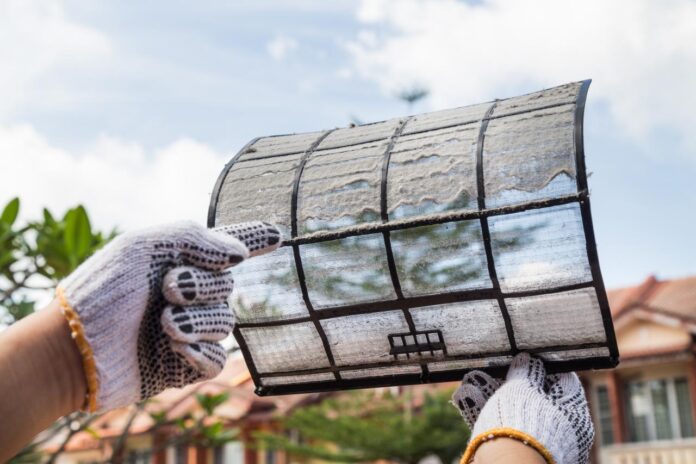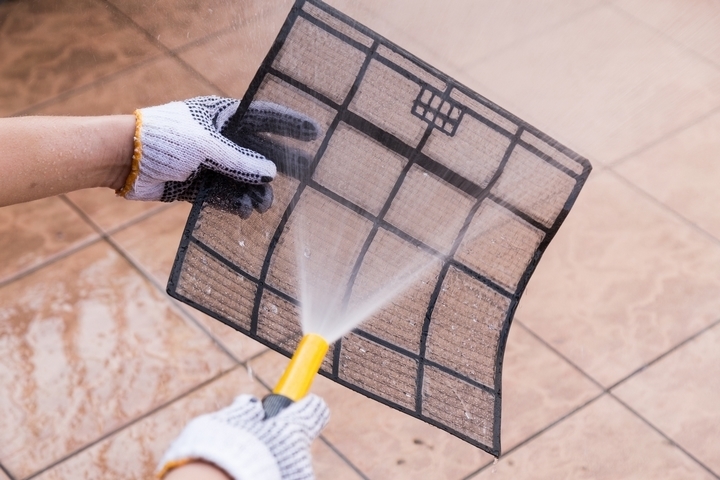Regular maintenance is the best thing you can do to keep your air conditioning in good condition. Yearly servicing will extend the lifespan of your system, reduce your power bills and keep your home cool. Technicians offering air conditioning installation Brisbane often include ongoing service plans that help you stay on top of your air con’s maintenance requirements.
A major part of air conditioning maintenance is inspecting and cleaning the filter. This will be taken care of as part of your yearly service, but it’s a DIY-friendly job and it doesn’t hurt to keep an eye on the filter in between servicing. In this article we’ll go over how to check your air conditioning filter and what you need to do to keep it clean.
When to Check Your Air Con Filter
For a simple component, the filters in air conditioners work hard, and they’re one of the most important parts of the system. Air conditioners work by drawing up air from inside the home, cooling it and then blowing it back into the room. This air has to be filtered to remove any dust, dirt or other contaminants that could build up on the fan and evaporator coil. Otherwise, dirt in the system would put strain on the motor, decreasing the efficiency of your air con and potentially damaging critical components.
Because of that, all homeowners should keep an eye on their air conditioning filters. Grab a ladder and check the system’s filter if you notice any of the following problems:
- Strange noises. Buildups of dirt on air conditioner components can put strain on the system’s motors and fans. These components often begin to make unusual clicking or squeaking noises as they wear out.
- Mouldy smells. Musty, damp or mouldy smells are a clear sign that your air con filter has become clogged with dust and dirt.
- Uneven airflow and cooling. If your air con doesn’t seem to be moving much air or is struggling to keep the room cool, it can be a sign that something is wrong with the filter.
- During heavy use periods. Filters should be checked and cleaned regularly during periods of heavy use, like through the middle of summer or winter.
How to Clean an Air Con Filter
All ducted and split system air conditioners use filters to clean the air that passes through them. The systems in your home should have user manuals that show you how to access and remove the filters. If you don’t have the manual, check the manufacturer’s website and see if you can download a digital version.
Regardless of the make and model of your system, there are only a few steps to checking and cleaning an air conditioner’s filter:
- Turn off the air system.
- Unclip or unscrew the front cover (for split systems), or unscrew the intake grate in the ceiling (for ducted systems). Check the user manual if you’re unsure how to access the filter on your air conditioner.
- Inspect the filter to see how much dust and dirt has built up on the element. It’s normal for this to be dusty, especially after hard use during summer.
- If the filter looks dusty or if the system was emitting mouldy smells, remove the filter and take it outside for cleaning.
- Use a vacuum to remove as much dirt from the filter as possible.
- Fill a bucket with warm water and mild soap and then use a sponge to gently clean the filter. Remove as much dust as possible from the fibres. Avoid scrubbing the surface as this can damage the filter.
- Use a hose or showerhead to rinse the filter with clean water. Avoid spraying the filter with high pressure water.
- Optionally, you can soak the filter in a mixture of water and household vinegar for an hour. This sanitises the cloth and can take care of any musty or mouldy smells. Rinse again with clean water after soaking.
- Place the filter outside to dry. Pick a spot that’s warm and dry with good airflow. Don’t place filters in harsh or direct sunlight.
When to Replace Your Air Con Filter
Cloth air conditioning filters can last for years with regular cleaning and maintenance. But the filter is one of the hardest working parts of an air conditioner, and it will eventually wear out and need replacing. The major sign that a filter needs to be replaced is when the cloth element becomes thin, looks shaggy or starts peeling away from the filter’s frame. Holes in the filter will allow dust and dirt to leak through, potentially damaging the system, so it’s important to replace filters as soon as they show signs of failure.
Replacement filters can usually be purchased from the manufacturer, or your service technician should be able to supply one. When you opt for air conditioning installation Brisbane, the technicians that install your system usually offer servicing plans as well. So, when your filter starts to look a little worse for wear, just give your installer a call and ask them if they can supply a replacement part.



















